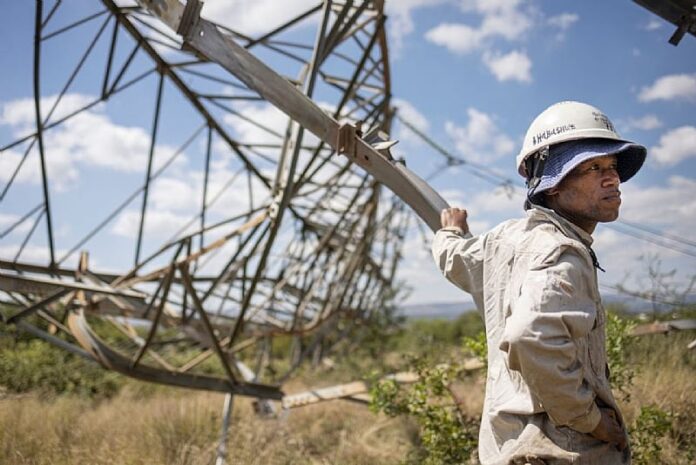The most industrialised nation on the continent, South Africa, is experiencing an energy crisis that critics claim goes much deeper than what the government is willing to publicly acknowledge.
Experts warn that the intermittent power outages could become significant when winter approaches in the Southern Hemisphere and drives up energy consumption.
The country’s outdated coal-fired power plants are the cause of the country’s worsening electrical crisis, which has been going on for the past 15 years.
During the past 12 months, the problem has gotten worse, with the country only being spared from the crippling rolling blackouts, called as load shedding, on Christmas Day, New Year’s Day, and a few other occasions.
To manage the shortfalls, the state-owned power company Eskom imposes daily scheduled rationing to cope with the production shortfalls.
But more recently the power cuts have lengthened, and many people are forced to endure blackouts of up to 12 hours a day.
Under pressure to end the power cuts, President Cyril Ramaphosa declared in February a National State of Disaster, a legal move introduced to prioritise efforts to address the problem.
He also appointed an electricity minister, Kgosientsho Ramokgopa, with the sole task of ending the blackouts.
But Ramokgopa, a civil engineer and former mayor of Pretoria, has run into a series of obstacles, analysts say.
Not least, the state of disaster was revoked after about two months, even though electricity supply has yet to improve.
In recent days power supplies have plummeted to levels even below the output officially communicated by the government, analysts say, denouncing an attempt by authorities to assuage public fury.
“They are containing public anger and frustration,” said energy expert Adil Nchabeleng.
The South African winter, which runs from June to August, can get cold, with temperatures plunging below zero degrees Celsius (32 degrees Fahrenheit) in some areas.
Ramokgopa has already warned people to brace for a dark and cold winter.
The treasury, meanwhile, has said the debt-saddled Eskom cannot borrow more funds for the next three years and needs to find the resources for badly needed repairs and refurbishments on its own.
“I’ll be brutally honest. It’s going to be an exceptionally difficult winter,” Ramokgopa told journalists in Pretoria last week.
The energy situation is so dire that experts warn the country could be on the brink of a widespread collapse of its electricity grid.
“Winter is going to be disastrous this year if nothing drastic is done now to return back to operation the current units that are out,” Nchabeleng told AFP.
“We are sitting in a catastrophe right now,” he said, adding that the grid risked being stretched “to the point of its collapse”.
Eskom, which provides the bulk of South Arica’s electricity, can guarantee supplies of 27,000 megawatts, the new electricity minister has said.
But summer demand peaked at 32,000 MW, and in winter it can soar to 37,000 MW — raising the prospect of dire cold for millions of people.
Since the start of the year, South Africans have had just a single day of uninterrupted electricity supply — on the eve of demonstrations called by opposition parties to protest the blackouts.
“At the moment there really is no light at the end of this tunnel,” said Lungile Mashele, an independent energy economist, saying the country was “in a precarious position”.
Eskom’s chairman, Mpho Makwana, told Newzroom Afrika television last month that it would take 18-24 months to end the blackouts, saying “There is no shortcut”.
The outages continue to hold back economic activity, with economists warning that growth could contract significantly, possibly plunging the country into recession.
The International Monetary Fund projects that real GDP growth will drop to just 0.1 percent for 2023, mainly impacted by the power cuts, from two percent last year.





